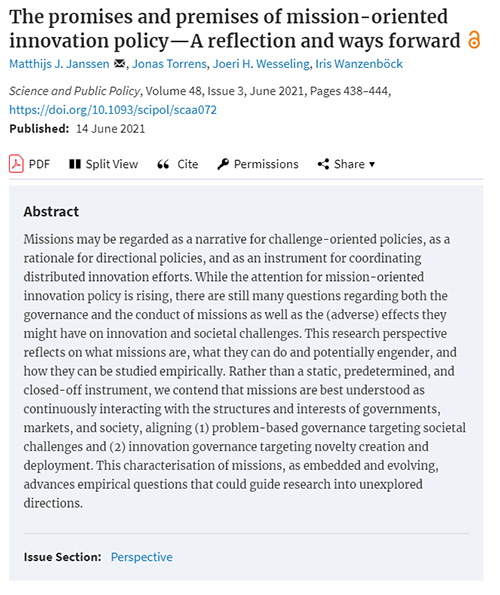Missions may be regarded as a narrative for challenge-oriented policies, as a rationale for directional policies, and as an instrument for coordinating distributed innovation efforts. While the attention for mission-oriented innovation policy is rising, there are still many questions regarding both the governance and the conduct of missions as well as the (adverse) effects they might have on innovation and societal challenges. This research perspective reflects on what missions are, what they can do and potentially engender, and how they can be studied empirically. Rather than a static, predetermined, and closed-off instrument, we contend that missions are best understood as continuously interacting with the structures and interests of governments, markets, and society, aligning (1) problem-based governance targeting societal challenges and (2) innovation governance targeting novelty creation and deployment. This characterisation of missions, as embedded and evolving, advances empirical questions that could guide research into unexplored directions.
The article is authored by Janssen, Torrens, Wesseling, and Wanzenböck. Read the full perspective here.
